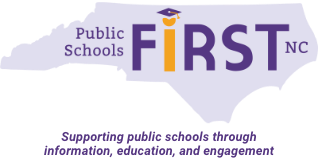The 2022 National Assessment of Educational Progress (NAEP) math and reading scores were lower than when the last NAEP assessments were administered in 2019. Although the size of the drop was substantial in some cases, given all of the learning disruptions over the past few years and drops shown in state-level assessment scores, educators had been preparing for bad NAEP news.
In fact, no state’s scores went up between 2019 and 2022. The only increase reported across all jurisdictions and subjects tested was for Dept. of Defense eighth-grade reading scores. Although some states’ 2022 scores did not differ significantly between 2019 and 2022, the majority of states’ scores did drop. The worst drops were in math. In eighth-grade math, every state except Utah registered significant score decreases.
North Carolina’s scores dropped in both reading and math. Fourth and eighth-grade reading scores slid five and seven points respectively, with fourth-grade scores dropping to the national average and eighth-grade scores dropping to three points below the national average. Fifth-grade math scores also dropped five points, and eighth-grade math scores dropped 10 points, to their lowest in 20 years.
However, North Carolina’s NAEP scores have been dropping for years — since 2013 or 2015, depending on the subject and grade — though the sharpest drops for all assessments occurred between 2019 and 2022. The chart below shows the fourth-grade reading national average (blue) and North Carolina’s scores (purple) from 1992 to 2022. North Carolina’s scores rose from 2005 to their peak in 2015 when they were well above the national average.

North Carolina’s fourth-grade math scores hit their highest point in 2011 and 2013, increasing steadily from 2005 and then reversing course. Note that every year, North Carolina’s scores are above the national average.

Eighth-grade reading reached its highest point in 2013 and eighth-grade math, like fourth-grade math, had its highest points in both 2011 and 2013. You can see charts for all grades and comparisons to North Carolina’s neighbors here.
These trends tell us that although the pandemic created tremendous disruptions in student learning, something else caused our students to start losing ground well before the pandemic.
The NAEP reading and math tests are given to a sample of Grade 4 and 8 students in every state as a way to monitor national progress across years. It is usually administered in odd-numbered years but the scheduled 2021 administration was postponed to 2022 due to pandemic disruptions.
NAEP provides important cautions against overinterpreting the score results, clearly warning against making causal claims about why scores change.
The National Center for Education Statistics (NCES) commissioner Peggy Carr specifically warned against attributing test score drops to time spent in remote learning: “There’s nothing in this data that says we can draw a straight line between the time spent and remote learning, in and of itself, and student achievement. We have massive comprehensive declines everywhere, where in some cases, they were in remote learning longer or shorter than others. It’s just too complex to draw the straight line.”
However, when trends emerge, it’s useful to examine what conditions are affecting education that may have contributed to test score changes. For example, we know the disruptions from COVID are highly related to the sharp drops in the 2022 scores.
But what was happening in North Carolina’s educational landscape in the years 2011-2015 and beyond that reversed the upward trend of NAEP scores in every grade and subject?
This time period coincides with massive disinvestment by the NC General Assembly in the state’s public education system (see a timeline here). Here are a few highlights:
- 2011: The General Assembly cut the highly-acclaimed Teaching Fellows Program and lifted the cap on the number of charter schools in the state.
- 2012-13: The education budget was slashed and the state lost about 2,282 teaching positions at the same time enrollment was increasing.
- 2013: Private school vouchers were introduced, draining more money from public schools. Lifetime salaries for teachers were capped at $50,000 and increases for master’s degrees were eliminated.
- 2014: Teacher pay dropped to 46th in the nation. North Carolina started assigning deeply flawed A-F performance grades.
The list continues, with hits to our state’s public education system continuing through to the latest 2022 budget.
It’s a testament to our public education system, which includes all public school educators, public school parents, and supportive communities that in nearly every year and in almost every subject, North Carolina’s NAEP scores have been above the national average as well as above all neighboring states except Virginia.
Experts from across the nation have weighed in on the NAEP results, including U.S. Education Secretary Miguel Cardona who said, “The results in today’s Nation’s Report Card are appalling and unacceptable…They’re a reminder of the impact this pandemic had on our learners and the important work that we must do now for our students.”
And MI State professor Katharine Strunk said, “None of this is new news. Rather than dwelling on what happened over the last two years — which was terrible for students across the country — we should focus our efforts on recovery, especially for students who were the most impacted by the COVID-19 pandemic.”
In North Carolina, we need to look much farther back than the last two years to identify contributors to our dropping NAEP scores. Fortunately, efforts are ongoing to combat the test score drops. But unless we return to supporting public education with appropriate funding and respect for teachers, and halt the privatization of our schools, the losses seen since 2013-2015 will likely continue.
The new NAEP scores should be yet another wake-up call for our legislators that their neglect of public education is harming our students. We need to hold accountable those policymakers and legislators who have persistently acted to damage our public schools.
